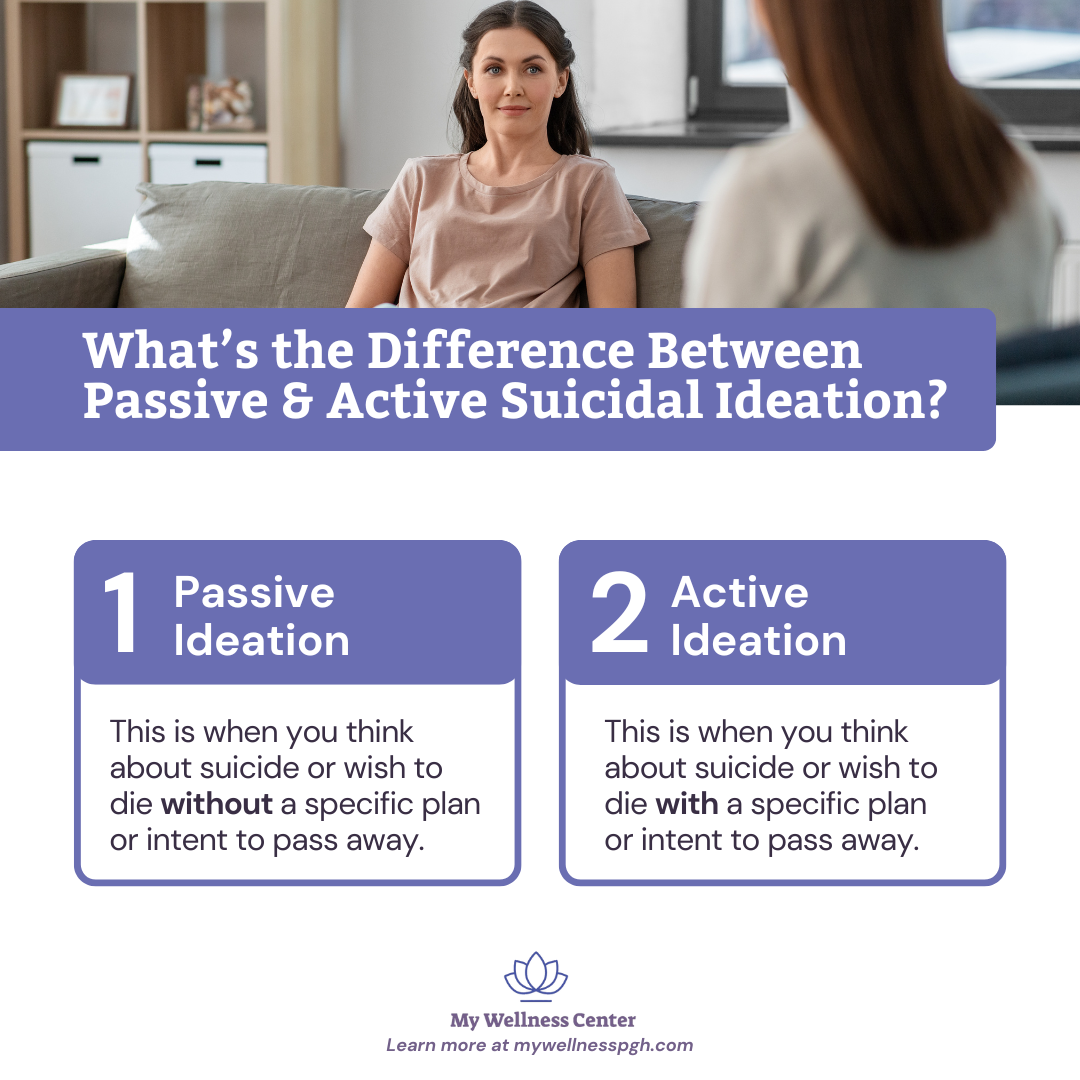Suicide is serious. If you’re at risk of hurting yourself or attempting suicide, call 911 or the suicide lifeline at 988.
September is suicide prevention month—and that’s something we take seriously.
Although common killers like heart disease and cancer frequently grab headlines and national attention, suicide is one of the biggest causes of death among people ages 10–54.
According to 2022 data from the National Institute of Mental Health, suicide is:
- No. 2 biggest cause of death among people 10–14
- No. 2 biggest cause of death among people 25–34
- No. 3 biggest cause of death among people 15–24
- No. 4 biggest cause of death among people 35–44
- No. 6 biggest cause of death among people 45–54
Sadly, that doesn’t even take into account the number of people who suffer from suicidal thoughts. According to the CDC, in 2023:
- 12.8 million adults reported experiencing suicidal thoughts
- 3.7 million adults made plans to commit suicide
- 1.5 million adults attempted suicide
- More than 49,000 adults died by suicide (1 death every 11 minutes)
Our country is in crisis, and the only way to battle this crisis is through enhanced mental health support and social services. Read on to learn more about whether or not suicidal ideation is normal, the difference between passive and active suicidal ideation, and more.
About
What Is Suicidal Ideation?
Is Suicidal Ideation Normal?
What Is Active Suicidal Ideation?
What Is Passive Suicidal Ideation?
What Counts As Suicidal Ideation?
How to Deal With Suicidal Ideation
Find A Therapist for Suicidal Ideation
FAQ: What to Know About Suicidal Ideation
What Is Suicidal Ideation?
Sometimes referred to as “suicidal thoughts,” suicidal ideation is when someone thinks about taking their own life—either as a fleeting thought or as something they ruminate over for days, weeks, or months.
Suicidal ideation is broken into active suicidal ideation and passive suicidal ideation, with the biggest differences revolving around the level of desire and the plan to act on that desire.
All instances of suicidal ideation are unhealthy, and they are a reason to seek support from a friend, family member, therapist, or medical professional.
Is Suicidal Ideation Normal?
As we mentioned earlier, millions of Americans seriously think about suicide, with 12.8 million reporting thoughts of suicide in 2023. That means about 5% of the adult US population experiences suicidal ideation in a given year.
And, according to the CDC, 15.6% of individuals will experience suicidal ideation at some point in their lives.
While this means it isn’t uncommon, it shouldn’t be considered “normal” in a way that is non-dangerous or non-threatening. Left unchecked, even passing thoughts of suicide can fester into much more dangerous thoughts or actions.

What Is Active Suicidal Ideation?
Active suicidal ideation involves having thoughts about suicide that include a specific plan or intent to end one’s life. In many cases, this individual has considered how, when, and where they would commit suicide—and there is a sense of urgency behind the act.
If you or a loved one is experiencing active suicidal ideation, seek medical support immediately. Call 911 or the suicide lifeline at 988.
What Is Passive Suicidal Ideation?
The biggest difference between passive suicidal ideation and active suicidal ideation is planning. With passive suicidal ideation, there’s no plan to commit suicide.
The French even have a phrase for this: “l’appel du vide” or “the call of the void.” This is a sudden intrusive thought that could have dire consequences, such as the sudden urge to throw yourself over the side when peeking over a cliff on top of a tall mountain.
However, some experts don’t consider “the call of the void” true suicidal ideation. Instead, they define passive suicidal ideation as feelings and thoughts of wanting to die, even if they don’t have specific plans to end their lives.
While passive suicidal ideation isn’t immediately life-threatening, it should be taken seriously; passive ideation can gradually turn into active suicidal ideation over time.
In addition, we frequently see passive suicidal ideation in individuals with pre-existing mental health issues, especially:
- postpartum depression
- narcissistic tendencies
- bipolar disorder
What Counts As Suicidal Ideation?
Suicidal ideation is a broad term—it doesn’t only apply when someone makes a detailed plan to take their life. In fact, it covers a spectrum of thoughts, feelings, and urges related to death or suicide, including:
- Passing thoughts of not wanting to live anymore
- Daydreaming about death or dying, even without intent
- Imagining “what if” scenarios, such as picturing how others might react if you were gone
- Intrusive urges, like “the call of the void,” where a dangerous thought appears suddenly and without warning
- Persistent rumination about death, dying, or suicide
- Creating a plan, no matter how vague or detailed
Whether brief or ongoing, passive or active, all of these experiences fall under suicidal ideation. Even if the thoughts feel fleeting, they’re a sign that something deeper is going on—and they should be taken seriously.
How to Deal With Suicidal Ideation
If you have any thoughts of suicidal ideation, you should speak with a therapist or medical professional—even if you don’t plan on acting upon it.
And if you are struggling with suicidal ideation, you’re not alone—and you don’t have to face these thoughts without help. Here are steps that can make a difference:
1. Reach out for support. Talk to a trusted friend, family member, or mental health professional about what you’re experiencing. Opening up often reduces the weight of these thoughts.
2. Seek therapy. Working with a licensed therapist provides tools to manage intrusive thoughts, identify triggers, and build healthier coping mechanisms.
3. Use crisis resources when needed. If your thoughts feel overwhelming or you’re at risk of acting on them, call 911 or dial 988 to connect with the suicide prevention lifeline immediately.
4. Prioritize self-care. Small steps like getting enough sleep, eating balanced meals, and moving your body can help stabilize mood and reduce the intensity of negative thoughts.
5. Build a safety plan. With the help of a therapist, you can create a written plan that outlines warning signs, coping strategies, and people you can contact in moments of crisis.
While suicidal ideation can feel isolating, remember: help is available, healing is possible, and these thoughts don’t define you.
Find A Therapist for Suicidal Ideation
If you’re struggling with suicidal ideation or any other mental health issues and it’s not an immediate, life-threatening issue, contact us.
We’ve built a team of dedicated, compassionate therapists who are ready to support you on your mental health journey with a variety of services.
FAQ: What to Know About Suicidal Ideation
Is suicidal ideation normal?
About 5% of the adult U.S. population experiences suicidal ideation every year. While this means suicidal ideation is somewhat common, it should still be taken seriously. Seek support if you experience any kind of suicidal ideation.
What is active suicidal ideation?
Active suicidal ideation is when an individual regularly thinks about suicide and begins to plan or take action to die by suicide.
What is passive suicidal ideation?
Passive suicidal ideation is when an individual thinks about suicide but doesn’t have a plan or take action to die by suicide.
What counts as suicidal ideation?
Any passing or persistent thoughts or considerations around death or suicide count as suicidal ideation. Some people refer to suicidal ideation as “suicidal thoughts.”
How do you deal with suicidal ideation?
Suicidal ideation is best managed through therapy with a licensed therapist or mental health therapist. If you’re at immediate risk of hurting yourself or attempting suicide, call 911 or the suicide lifeline at 988.

